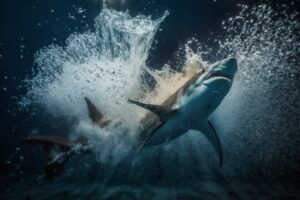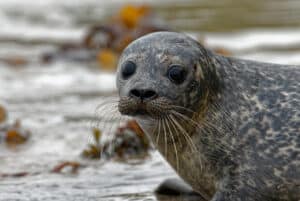Lots of people take the time to visit the New York Harbor when visiting New York City. But have you ever wondered what creatures may live in the deep, dark waters of the bay? If so, you’re in luck. Let’s dive into what lives at the bottom of the New York Harbor, as well as some animals that live in the surrounding area.
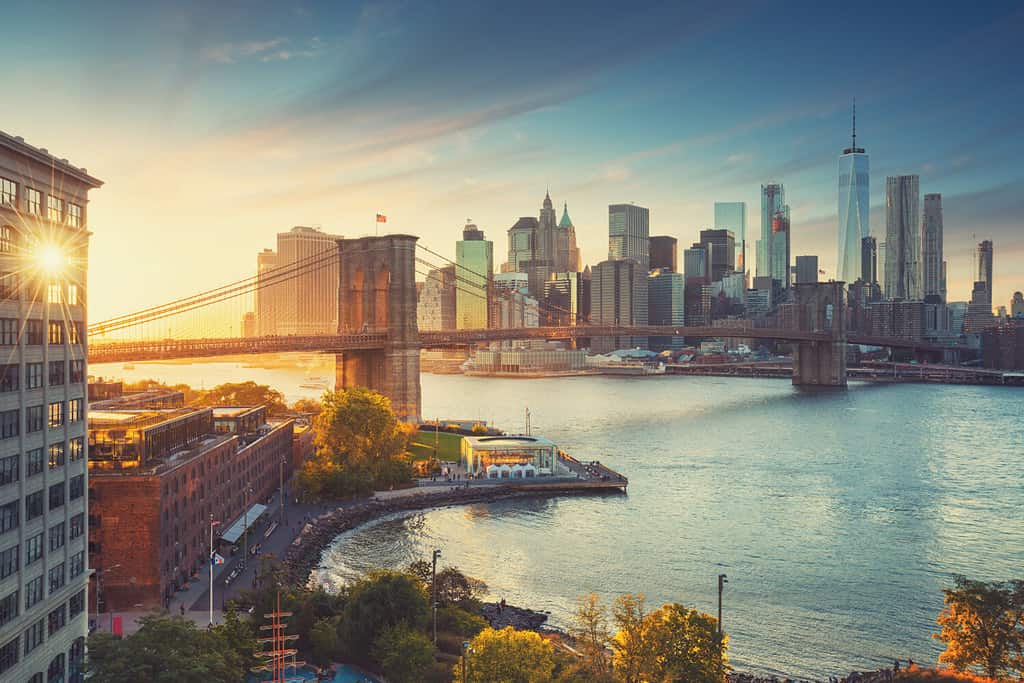
New York Harbor is important economically and culturally to the city and state of New York.
©IM_photo/Shutterstock.com
What is the New York Harbor?
The Hudson River joins the Atlantic Ocean at the mouth of New York Harbor. It is located close to the city of New York on the eastern coast of the United States. The port has been essential in the history, economy, and culture of New York City in addition to acting as a vital marine gateway.
New York Harbor is a complicated and busy waterway that covers around 24 square miles. It stretches north along the shore of New Jersey and is bordered by the beaches of Staten Island, Brooklyn, and Manhattan. The Statue of Liberty on Liberty Island and the Verrazano-Narrows Bridge face the narrow passage, known as the Narrows, which connects the port to the Atlantic Ocean.
The Success of New York Harbor
For decades, New York Harbor has been a key hub of trade and business. Due to its advantageous port position, New York City was able to develop into a significant economic center. With multiple cargo terminals, container ports, and docking facilities that handle a variety of items, including fuel, vehicles, and consumer goods, the harbor acts as a crucial gateway for global trade.
New York Harbor is significant not only economically but historically and culturally. From the entrance of European explorers to the waves of immigrants that entered the country through Ellis Island, it has been there for significant events in American history. For millions of people looking for a better life, the harbor served as a portal to the “New World” and a representation of opportunity and optimism.
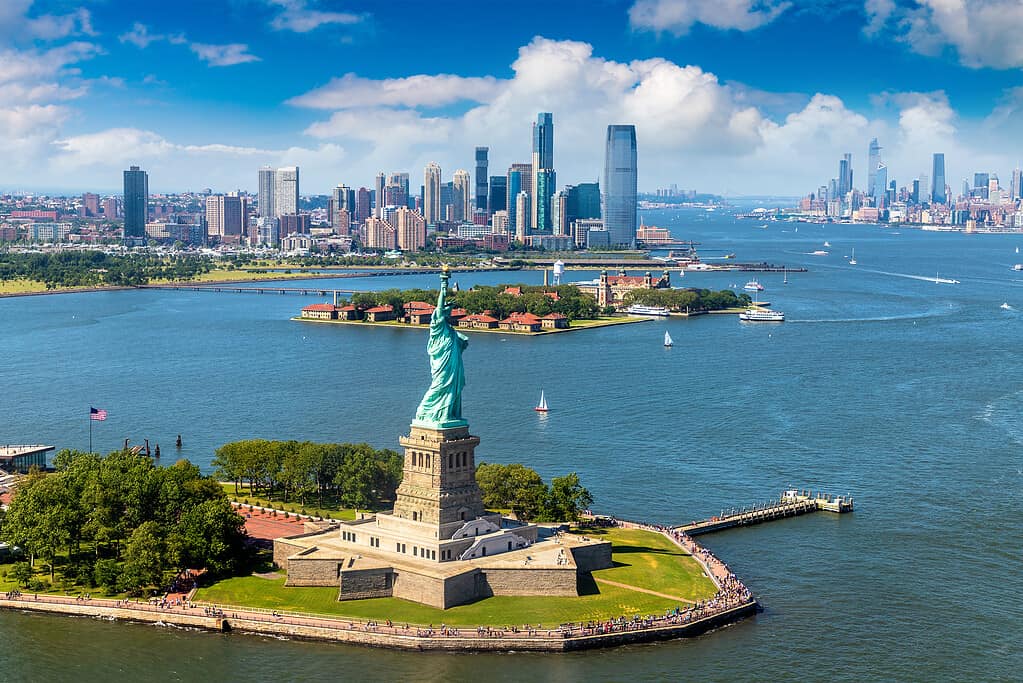
The Statue of Liberty welcomes ships into the harbor.
©iStock.com/bloodua
The Statue of Liberty
The Statue of Liberty is a timeless emblem of freedom and democracy. The Statue and Ellis Island, where immigrants were once processed and let into the country, are just two of the noteworthy landmarks that can be seen in the harbor. Each year, millions of tourists go to these attractions to take in the historical, cultural, and architectural splendor of the port.
The harbor offers a variety of recreational options, including sailing, fishing, boating, and sightseeing. Travelers can take scenic excursions and enjoy panoramic views of the harbor, the city skyline, and its well-known sites thanks to ferry services.
What Makes New York Harbor Special?
Many things contribute to the significance and distinctiveness of New York Harbor, which has a distinctive personality all of its own. To start, New York Harbor has a long and colorful history, having been crucial to the creation and growth of the United States. Millions of immigrants who came to America in search of better prospects used it as their entry point. The Statue of Liberty, which is proudly displayed in the harbor, became a symbol of hope and freedom. Ellis Island, which is located in the harbor, served as the main immigration processing facility.
New York Harbor is a significant economic hub that plays a key role in facilitating global trade and business. It has a large number of ports, terminals, and shipping facilities that move a lot of cargo, including autos, consumer goods, and petroleum products. The harbor serves as a crucial hub for marine activity and boosts the local and national economies because of its strategic position and first-rate transportation facilities.
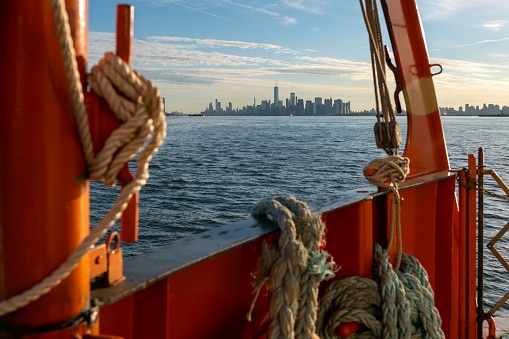
The Staten Island Ferry takes passengers from Ellis Island to Manhattan.
©PorqueNoStudios/iStock via Getty Images
The skyline of New York Harbor is stunning and studded with well-known buildings. The waterfront is beautifully framed by Manhattan’s imposing buildings, such as the Empire State Building and One World Trade Center. One of the longest suspension bridges in the world, the Verrazano-Narrows Bridge connects Staten Island and Brooklyn. The harbor’s distinctive charm and aesthetic appeal are enhanced by these architectural marvels.
New York Harbor is famous for its rich cultural variety and thriving arts scene. Visitors come from all over the world to the city’s cultural attractions, including the Metropolitan Museum of Art, the Museum of Modern Art, and the Broadway theaters. Events that honor the city’s rich tradition and inventive spirit are frequently held in the port area, including musical performances and cultural festivals.
Both locals and visitors may enjoy a wide range of recreational opportunities in New York Harbor. Marinas and yacht clubs may be found all along the harbor’s banks. Boating, sailing, and fishing are all very popular sports. The harbor, the Statue of Liberty, and the city skyline may all be seen in exquisite detail from ferries and tourist cruises. Several waterfront parks and green areas surround the harbor, offering places to picnic, run, and enjoy the outdoors.
Both marine and avian species of animals can be found in New York Harbor. Despite being surrounded by a city, the port offers vital habitats for many animals. The port serves as a nursery ground for a variety of species, including striped bass, bluefish, and flounder. Along the beach, migratory birds like ospreys and herons may be seen, while seals sporadically visit the harbor in the winter. In order to maintain the biological balance of the harbor, actions are being taken to enhance the water quality and restore ecosystems like oyster beds.
Where is New York Harbor Located on a Map?
New York Harbor connects the mouth of the Hudson River to the Atlantic Ocean. The harbor stretches for around 24 square miles along the shore of New Jersey and is bordered by the beaches of Staten Island, Brooklyn, and Manhattan. The Statue of Liberty and the Manhattan skyline are two iconic images associated with the harbor.
What Lives at the Bottom of New York Harbor?
A wide range of marine species may be found at the bottom of New York Harbor. The harbor has a special ecological landscape that is home to many different creatures, including plants, insects, and fish.
Oysters
Large-scale oyster beds formerly dotted New York Harbor, and now attempts are being made to revitalize and restore these populations. As filter feeders that filter enormous volumes of water and provide a home for other marine species, oysters are essential to the environment.
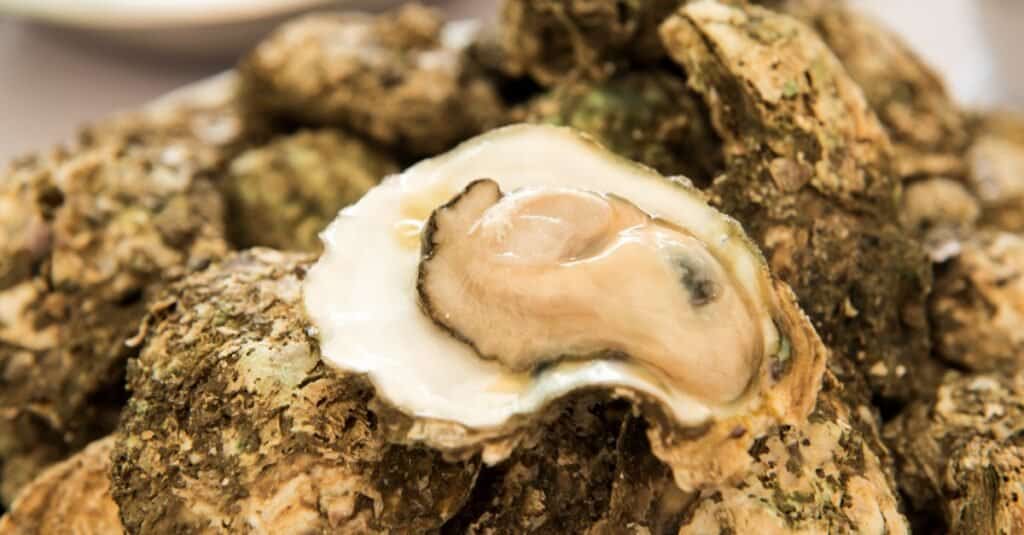
Oysters (pictured) are a popular ingredient in dishes from restaurants near the harbor.
©wasanajai/Shutterstock.com
Crabs
The port frequently harbors a variety of crab species, such as blue crabs and green crabs. These crustaceans scurry over the harbor bottom, consuming various creatures and playing a significant role in the food chain.
Fish
There are many different types of fish in New York Harbor. Its waters are home to species including striped bass, flounder, bluefish, and menhaden. The port serves as a breeding and feeding place for several fish species, which take advantage of the abundant supplies.
Sea Stars
Sea stars, also called starfish, are present in the harbor. However, their populations have been damaged by a number of factors. Nevertheless, the equilibrium of the marine ecology is maintained in part by these interesting echinoderms.
Mussels
Numerous kinds of mussels, including the blue mussel, are seen clinging to rocks and other objects in the harbor. Mussels are filter feeders that reduce particle matter in the water, which helps to enhance water quality.
Invertebrates and Worms
Numerous worm species, like tube worms and polychaetes, which are essential to the decomposition of organic debris, are also found on the harbor floor. The harbor is also home to other invertebrates including clams, snails, and shrimp.
Seaweeds
The harbor is home to a variety of seaweed species, such as rockweed and kelp, which serve as crucial habitats and increase biodiversity overall.
It is important to note that pollution and other human activities have had an effect on the health of the marine ecology in New York Harbor. To enhance water quality and restore biological balance, conservation activities, and initiatives are in place that enable these marine species to flourish and contribute to a better port environment.
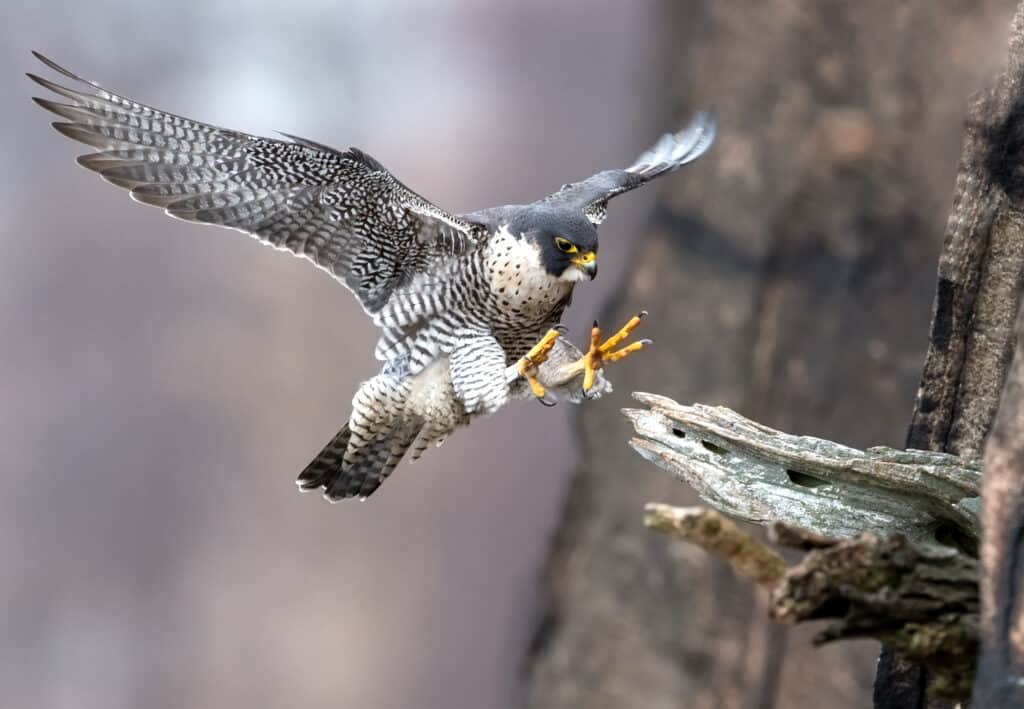
Peregrine falcons can be seen around New York Harbor.
©Harry Collins Photography/Shutterstock.com
Animals That Live Around New York Harbor
Both marine and land animals can be found living in New York Harbor. There are various creatures that may be found in and around the opening to the Hudson River, from the harbor’s waters to the nearby coastal areas.
- Harbor Seals – Occasionally, harbor seals have been sighted in the waters of New York Harbor, particularly in the winter. To rest and soak up the sun, they haul out on rocks and docks.
- Ospreys – You may observe these impressive raptors diving into the port to grab fish. Ospreys construct their unique nests along the waterfront, which are found on platforms or high buildings.
- Diamondback Terrapins – These unusual turtles may be found in the marshes and estuaries around the harbor. They are well-adapted to brackish water settings. The only turtle species in North America that can only survive in brackish water is this one.
- American Oystercatchers – These shorebirds are distinguished by their large, colorful bills and eye-catching black and white feathering. They may be observed throughout the harbor’s shorelines, sifting through the mud in search of food, and they eat shellfish.
- Peregrine Falcons – In the area, peregrine falcons, who are renowned for their remarkable speed and aerial hunting skills, have returned. They take advantage of the urban setting by establishing their nests on high buildings and bridges.
- Red Foxes – Red foxes have been discovered in metropolitan parks and green spaces while being more frequently found in more forested regions near the port. They are adept at adjusting to urban settings and are occasionally observed scouting on the outskirts of the city.
- Monarch Butterflies – Throughout the course of their yearly journey, monarch butterflies pass through the area, including the harbor’s coastal regions. They deposit their eggs on milkweed plants, which they also use as a food source.
These are just a few examples of the varied fauna that inhabits New York Harbor and its surrounding environment. The abundance of so many different species demonstrates the value of conservation efforts that organizations in New York are taking to clean up the Harbor.
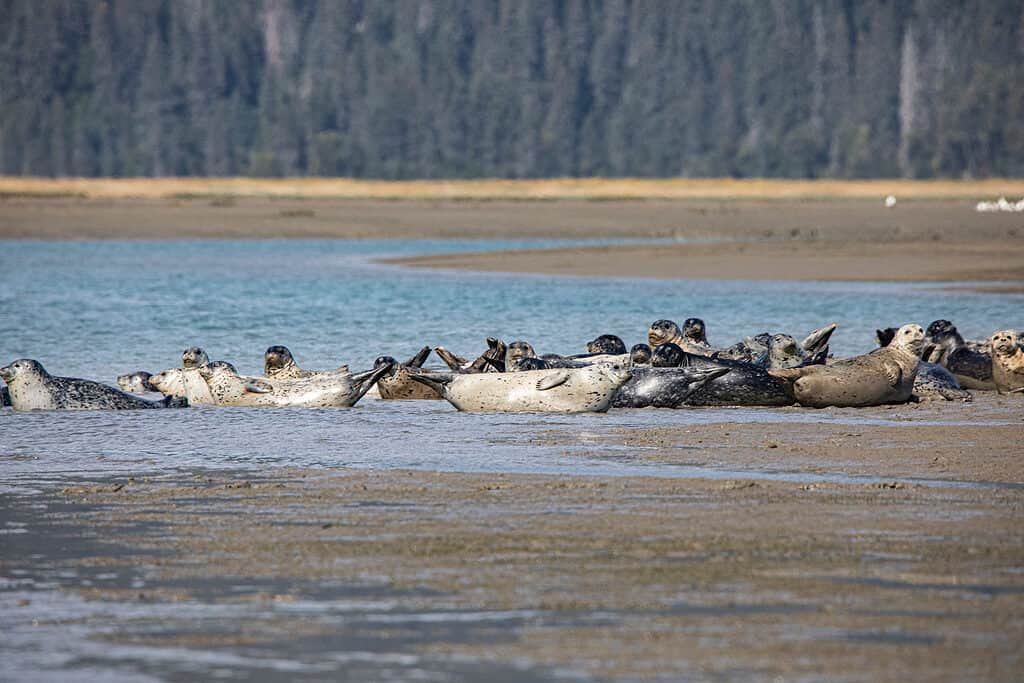
Harbor seals (pictured) are a rare but delightful treat to see in New York Harbor.
©Danita Delimont/Shutterstock.com
What’s Wrong with the New York Harbor?
Like many other metropolitan coastal locations, New York Harbor deals with a variety of environmental issues. Water contamination is first and foremost a major problem for New York Harbor. High levels of pollutants in the port are a result of runoff from metropolitan areas, industrial operations, and wastewater treatment facilities. The health of marine life and the quality of the water can be adversely affected by contaminants such as heavy metals, fertilizers, and minerals.
Heavy downpours can cause the outdated combined sewage system in New York City to overflow. The sewage system transports both wastewater and stormwater runoff. As a result, untreated sewage and rainwater are dumped straight into the harbor, polluting the water and endangering human and animal health.
The Destruction of Vital Ecosystems
Important coastal ecosystems have been lost or degraded as a result of the development of the harbor and its surroundings. Reduced wetlands, marshes, and oyster beds have led to a decline in biodiversity and the loss of many species’ essential habitats. In that same vein, many non-native species have been introduced to New York Harbor by ship ballast water, including zebra mussels and green crabs. These invasive species have the potential to displace native species, upset the equilibrium of the ecosystem, and affect the harbor’s general health.
Rising sea levels and an increase in the frequency of extreme weather events are two aspects of climate change that New York Harbor must contend with. Concerns about coastal erosion, floods, and saltwater intrusion into freshwater systems can have an effect on both the environment and the infrastructure of people.
Last but not least, plastic pollution affects New York Harbor just like it does many other aquatic bodies. Microplastics, single-use plastics, and other trash can harm marine life, contribute to water contamination, and diminish the harbor’s visual appeal.
These problems are being addressed, and New York Harbor’s status is currently being improved. Restoring ecosystems and oyster populations, establishing green infrastructure projects to manage stormwater runoff, and encouraging ethical waste management methods are some of the initiatives. In order to build a sense of stewardship and promote sustainable methods to safeguard and restore the health of New York Harbor, public knowledge and community involvement are also essential.
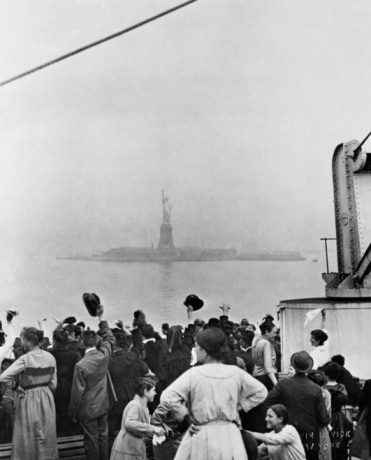
The Statue of Liberty was often an immigrant’s first sight of America.
©Archive Holdings Inc./The Image Bank via Getty Images
Interesting Facts About New York Harbor
- In the late 19th and early 20th centuries, New York Harbor served as the main port of entry for millions of immigrants seeking asylum in the United States. Over 12 million immigrants were processed and examined at the major immigration processing facility, Ellis Island, which is situated in the bay.
- One of the most well-known sites in the world, the Statue of Liberty stands up in New York Harbor. The monument, a gift from France to the United States, stands for liberty and democracy. Since its consecration in 1886, it has welcomed innumerable tourists and immigrants to the nation.
- One of the busiest and most significant commercial ports in the United States is New York Harbor. It transports a considerable amount of freight, including things like gasoline, vehicles, and consumer goods. The port is essential to sustaining both the local economy and global trade.
- New York Harbor served as a significant port of embarkation for American troops traveling to the European and Pacific theaters during World War II. Soldiers sailed out from the waterfront for their service posts abroad.
- There have been important naval battles that have taken place in New York Harbor. British and American fleets fought in and around the harbor during the American Revolution. More recently, the harbor was the location of the renowned “Parade of Ships” during Fleet Week, which included navy ships from all over the world.
- There are several recreational possibilities available in New York Harbor. Visitors may explore the port and take in breathtaking views of the city skyline, the Statue of Liberty, and Ellis Island by taking ferries or taking boat cruises. Fishing, kayaking, and sailing are popular pastimes in the port.
The photo featured at the top of this post is © iStock.com/bloodua
Thank you for reading! Have some feedback for us? Contact the AZ Animals editorial team.



